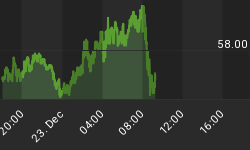There are over a million oil and gas wells in the United States. There are also several hundred thousand miles of pipelines. Digitization is on the rise in the notoriously conservative oil and gas industry as companies wake up to the cost and operational efficiency boost that sensors and algorithms can offer them. Meanwhile, cybercriminals are keeping ahead of the learning curve, but oil and gas is largely pretending not to notice them.
Energy companies—including E&Ps, pipeline operators, and utilities—spend less than 0.2 percent of their revenues on cybersecurity, two security consulting firms have calculated. This compares with three times this portion of revenues spent on cybersecurity by financial services providers and banks.
True, banks and their likes deal directly with people’s money, so it would make sense to be extra careful. Also, the financial services industry has been under growing pressure from alternative service providers, so it has had to become flexible and open to new tech to stay ahead of the competition.
Oil and gas producers, on the other hand, don’t seem to see themselves a likely target of a cyberattack even though such attacks against the industry have been growing in frequency. Symantec, according to Bloomberg, is tracking as many as 140 cybercriminal groups that target the energy industry. That’s up from 87 in 2015.
Last year, Deloitte reported that the energy industry was the second most popular target for cyberattacks in 2016. Almost three-quarters of U.S. oil and gas companies, the consultancy said, had a cyber incident in that year, yet only a tiny majority cited cyber risk as a major concern in their annual reports. This is what makes the cybersecurity situation in oil and gas very worrying.
A month ago this worry materialized in the hack attack against the communications system supplier to five pipeline operators. While the consequences of the hacking were not particularly serious, the attack should serve as an urgent warning to the industry: the more reliant it becomes on tech, the more vulnerable it becomes.
There is also the unpleasant fact that oil and gas have had to play catch-up with cybersecurity. As the industry struggled to adapt to the lower-for-longer oil prices with cost cuts, oil companies put investment into boosting cybersecurity on the back burner during the worst of the oil price plunge in 2015 and 2016, while hackers grew increasingly inventive and bolder.
The projects to strengthen the networks and systems against cyber attacks did not receive the necessary attention or funding, and today most security teams are still short of staff or technology to effectively monitor and prevent cyber attacks, security experts explain. Related: Can The Dollar Continue To Rally?
Now that things are looking up with higher prices, it is time to refocus on cybersecurity before a serious attack takes place. Oil and gas pipelines are, after all, critical infrastructure and they deserve due attention from their operators. So do wells and platforms. It’s only a matter of time before someone makes a blockbuster movie about hackers taking over oil producing infrastructure to remotely wreak havoc on the industry. Unfortunately, it may only be a matter of time before something like this happens in real life as well.
Deloitte said as much in its 2017 report: “If a cyber attacker were to manipulate the cement slurry data coming out of an offshore development well, black out monitors’ live views of offshore drilling, or delay the well-flow data required for blowout preventers to stop the eruption of fluids, the impact could be devastating.”
Addressing cybersecurity issues in oil and gas is a difficult job. It’s a very complex industry and there are many cybersecurity aspects that need equally urgent addressing as more and more links of the supply chain become vulnerable to attacks because of digitization. Yet difficult or not this job needs doing now. All cybersecurity experts can’t be wrong, can they?
By Irina Slav for Oilprice.com
More Top Reads From Safehaven.com:
















